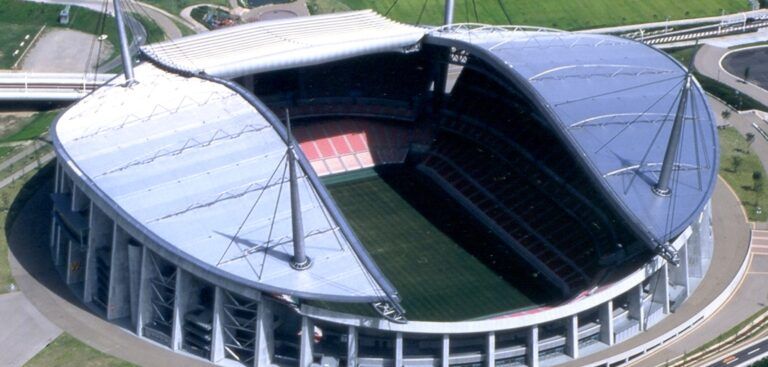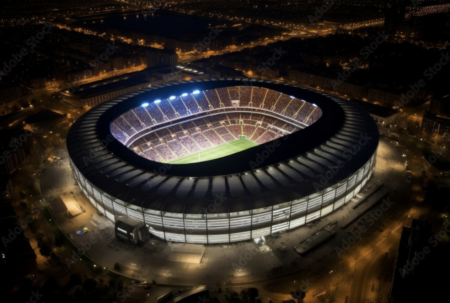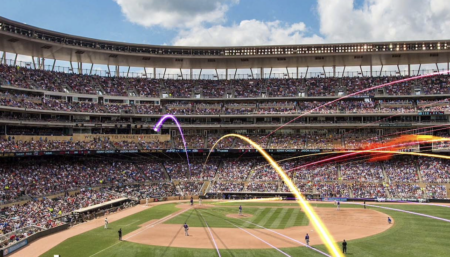For the first time in history, Japan will host the 2019 Rugby World Cup (RWC) at 12 venues across the country from the northern city of Sapporo to the southern island of Kyushu. Stadia Magazine has the ultimate guide for all you need to know.
Twenty of the world’s best international rugby teams will traverse the Land of the Rising Sun in an effort to secure rugby’s top spot and its most lucrative silverware, the Webb Ellis Trophy. The occasion is the third largest sporting event in the world – following the summer Olympics and the Football World Cup – and is expected to attract more than 500,000 foreign fans to the East Asian isle over the course of seven weeks.
While Japan is not traditionally known as a rugby nation, the tournament has sparked an unprecedented interest in the game in Asia. Venue operators have even indicated that they are on track to make more money than the record-setting tournament held in England in 2015.
As a result, selected host cities have renovated their existing venues to facilitate the world’s greatest rugby event scheduled to kick off on September 20. Here is a closer look at the venues for the tournament
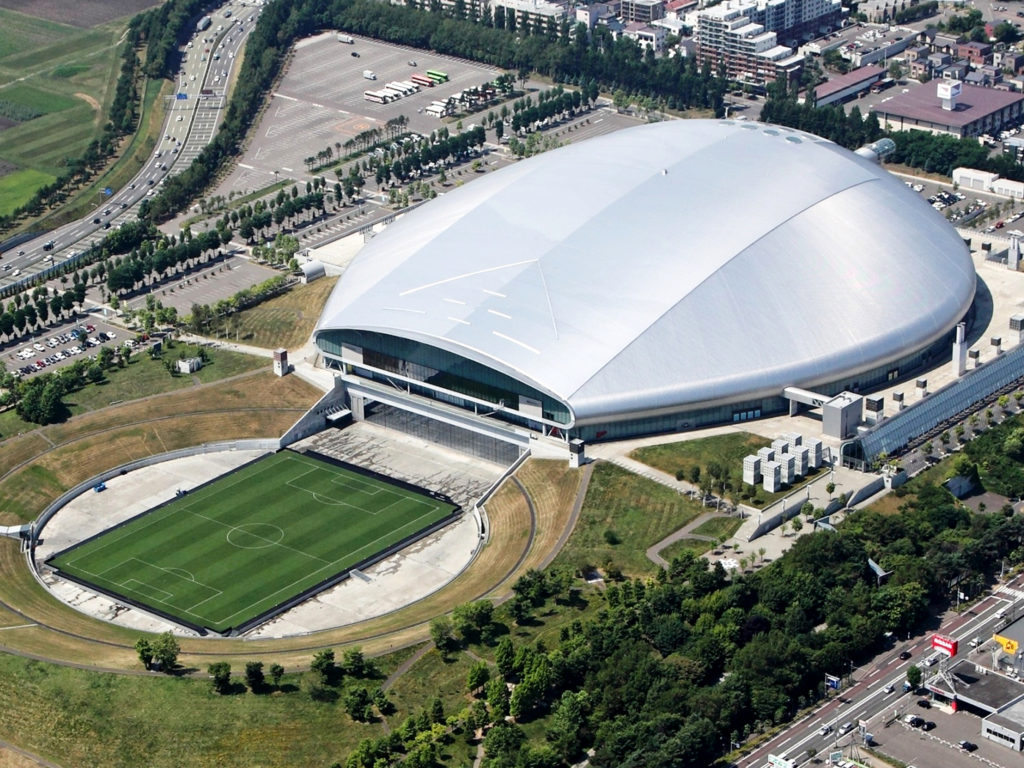
Name: Sapporo Dome
Location: Sapporo City
Capacity: 41,410
Hosting: Two group matches
About:
Underneath the curvilinear contours of Japan’s Sapporo Dome is one of the nation’s centerpiece venues, which is home to Japan’s Pro Baseball Nippon Ham Fighters and association football club Hokkaido Consadole. Completed in 2001 and renovated in 2009, the stadium is fully enclosed and was previously used for the opening ceremony of the 2017 Asian Winter Games and as one of the sites for the 2002 FIFA World Cup. Notably, the stadia can be transformed from a diamond baseball format with artificial turf into a rugby-ready rectangular pitch of natural grass, which grows outside and is floated in and spun into position when needed.
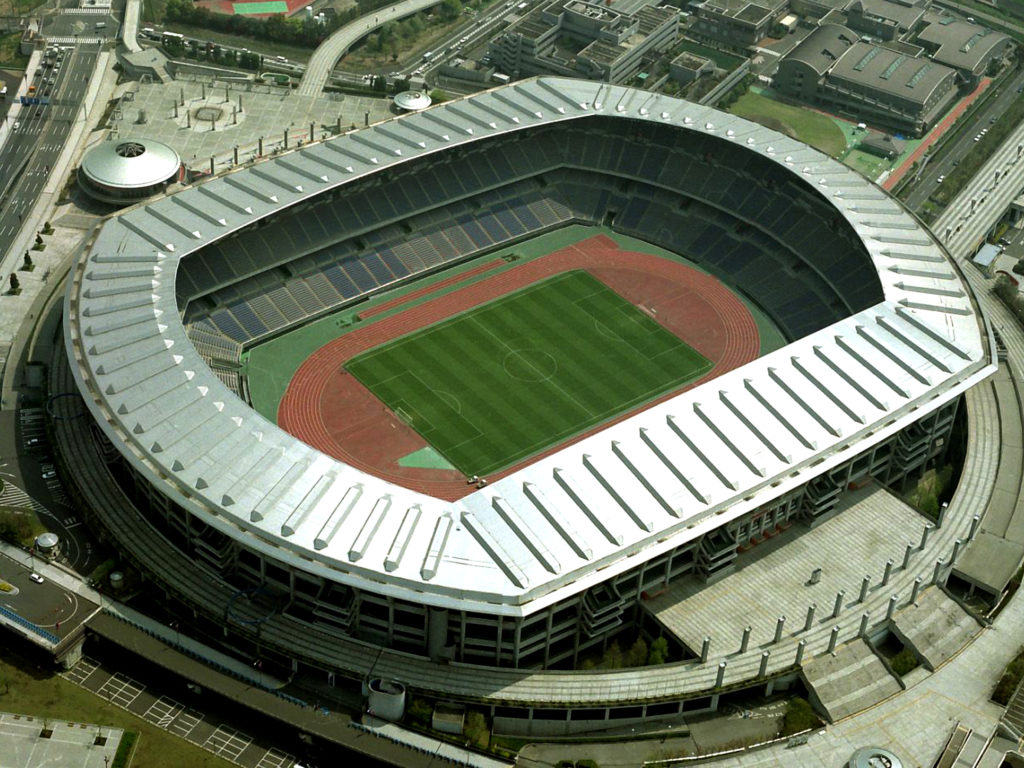
Name: International Stadium Yokohama
Location: Kanagawa Prefecture, Yokohama City
Capacity: 72,327
Hosting: Four group matches, two quarter finals and the final
About:
International Stadium Yokohama is the country’s largest stadium and the home playing venue of J. League’s Yokohama F. Marinos. The city is often credited as the birthplace of rugby in Japan with matches reportedly taking place as early as the 1860s. The venue opened in 1998 after four years of construction at a cost of US$0.5billion. The seven-storey, 52-metre high Stadium has previously hosted the 2002 FIFA World Cup and will play a pivitol role in the RWC, hosting two quarter finals and the grand final main event on November 2.
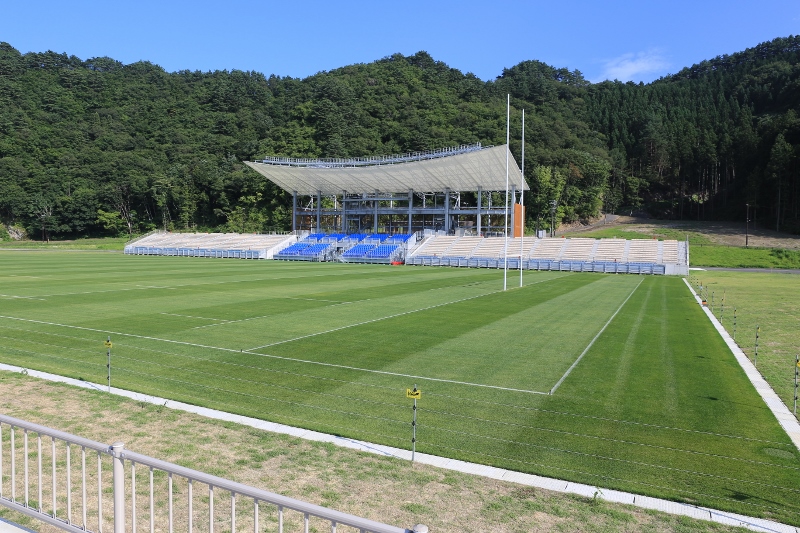
Name: Kamaishi Recovery Memorial Stadium
Location: Iwate Prefecture, Kamaishi City
Capacity: 16,334
Hosting: Two group matches
About:
The venue was built to commemorate those who died following the Great East Japan Earthquake and tsunamit that devastated the Sanriku rias coast in 2011. The 16,334-seat stadium was included in the tournament schedule by RWC organisers as way to contribute to the rebuilding of Kamaishi, which is the smallest city to host matches. Kamaishi has a heritage in rugby excellence seeding one of Japan’s most successful clubs – Nippon Steel – which won several national titles. It is now the permanent residence of Kamaishi Seawaves since 2001. The stadium will employ 10,000 temporary seats for the World Cup, with 6,000 permanent seats remaining after the tournament has been concluded.
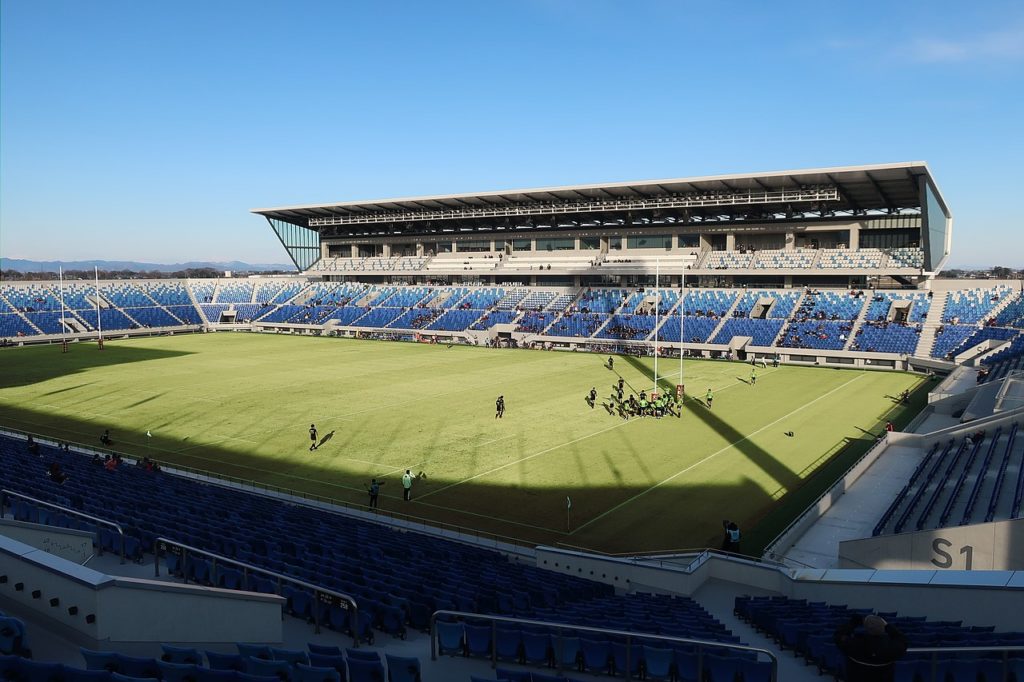
Name: Kumagaya Rugby Stadium
Location: Saitama Prefecture, Kumagaya City
Capacity: 24,000
Hosting: Three group matches
About:
Completed in 1991 and comprehensively refurbished in 2018 to meet world rugby standards, Kumagaya Stadium is a firm favorite of Japanese rugby fans as one of the country’s premier stadia built exclusively for the sport. Known locally as ‘the holy land of the east’, Kumagaya’s history is deeply rooted in rugby having played host to school clubs, training and tournaments across the region. Currently it serves as the home venue of Top League club Panasonic Wild Knights and sits in a large sports complex comprised of several rugby fields, running tracks and other sports grounds. Following the tournament, the stadium will host the rugby sevens for the 2020 Summer Olympics.
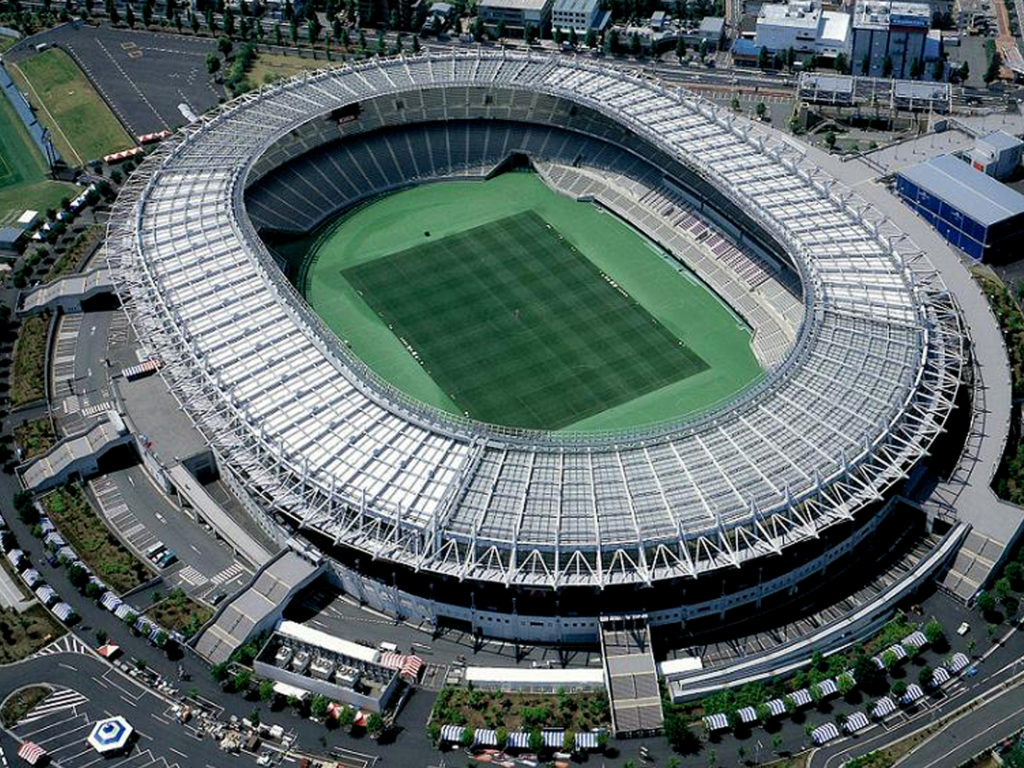
Name: Tokyo Stadium
Location: Tokyo
Capacity: 49,970
Hosting: Five group stages, two quarter finals and the third-place playoff
About:
After abandoning the plans for a new national venue for the World Cup, the organisers chose the Tokyo Stadium – also known as Ajinomoto Stadium – as a replacement. It is one of the country’s most iconic stadia in the western city of Chofu and the permanent residence of J1 League football club FC Tokyo and J2 League football club Tokyo Verdy. Tokyo Stadium will host some of RWC’s biggest matches, including the opening ceremony and the tournament opener between Japan and Russia. Tokyo Stadium is a regular venue for Top League, Japan’s premier club rugby competition, and will also play host to the Olympic Rugby Sevens at Tokyo 2020.
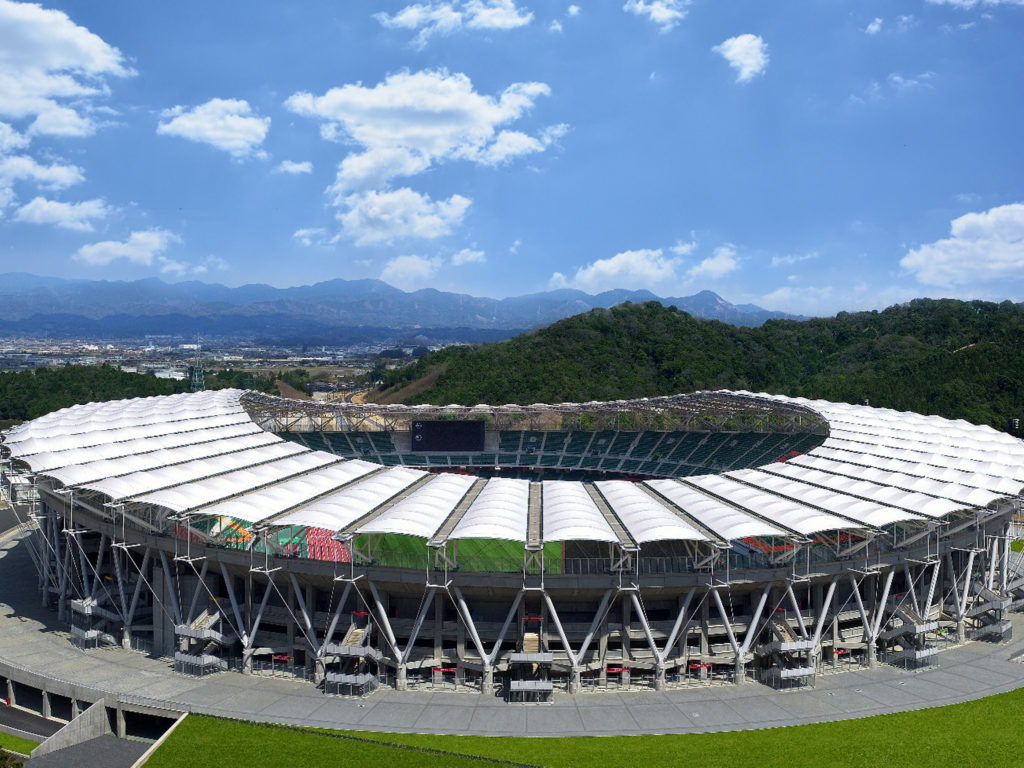
Name: Shizuoka Stadium Ecopa
Location: Shizuoka Prefecture
Capacity: 50,889
Hosting: Four group matches
About:
Stadium ECOPA is nestled into the folds of Shizuoka’s verdant hills, overlooking its famous tea plantations and Mount Fuji – the active volcano that is Japan’s tallest peak. The stadium opened in 2001 and was a chosen venue for some key matches in the 2002 FIFA World Cup. While it is relatively remote, it is one of Japan’s football strongholds, regularly hosting games for Jubilo Iwata and Shimizu S-Pulse of the J. League.
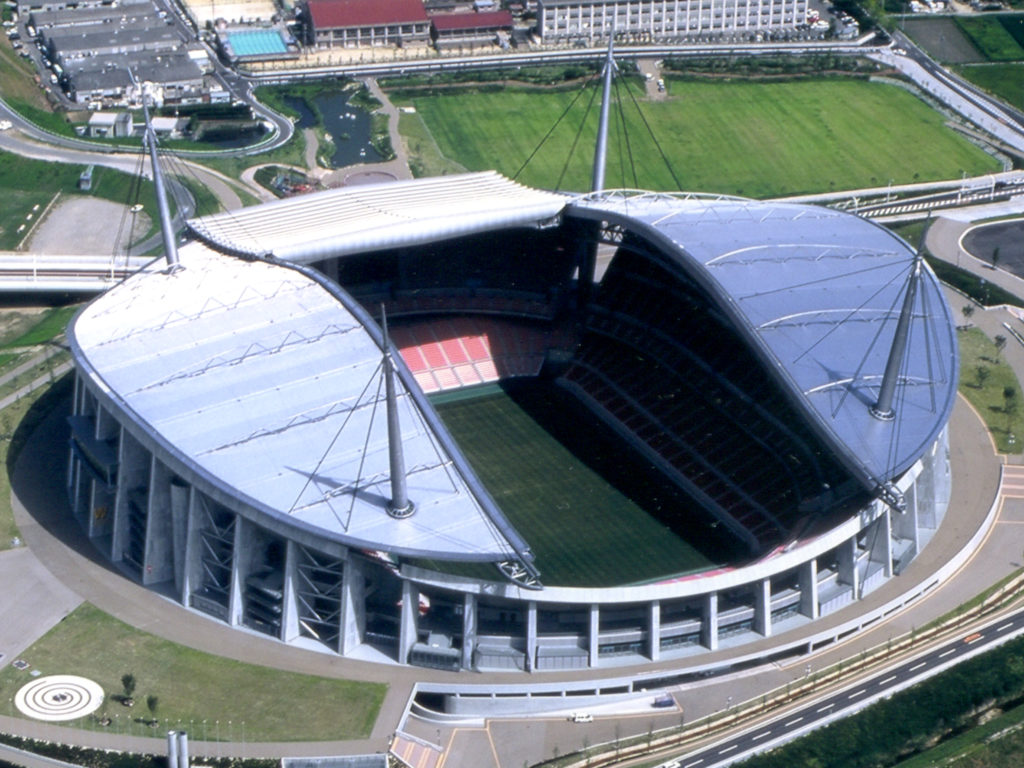
Name: City of Toyota Stadium
Location: Aichi Prefecture, Toyota City
Capacity: 45,000
Hosting: Four group matches
About:
The city of Toyota was once called Koromo but changed its name in 1959 because of the car company, which has several manufacturing plants there. The City of Toyota Stadium is known for its steep stands and its unique retractable accordion-like roof although it hasn’t been closed since 2015 due to the extra costs associated with maintenance. The stadium, designed by renowned Japanese architect Kisho Kurokawa hosted the 2012 FIFA Club World Cup Japan semifinals and is home J. League club Nagoya Grampus and rugby union team Toyota Verblitz.
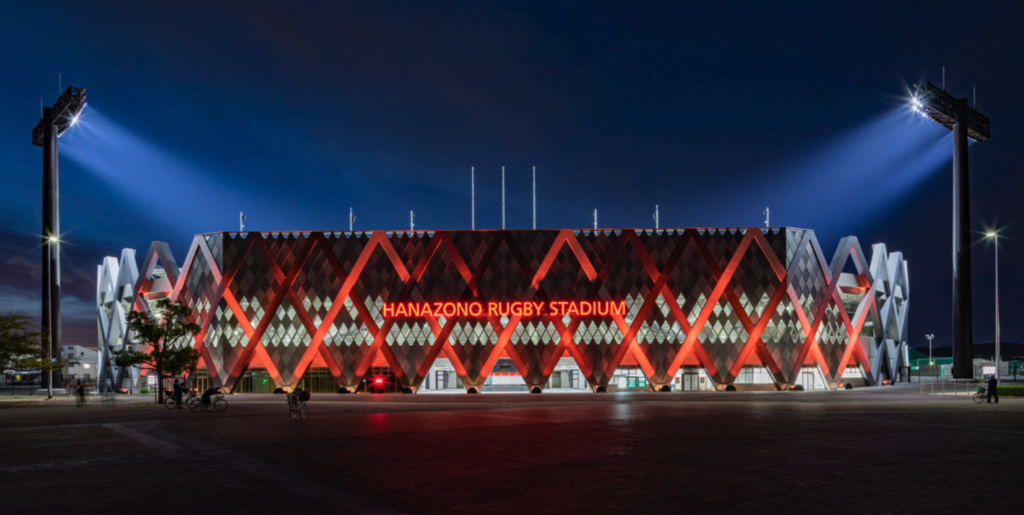
Name: Hanazono Rugby Stadium
Location: Osaka Prefecture, Higashi-Osaka City
Capacity: 24,100
Hosting: Four group matches
About:
Hanazono Rugby Stadium is on the outskirts of Western Japan’s second-largest city in Osaka. The stadium, which opened in 1929 is Japan’s oldest rugby-dedicated stadium and is largely considered by many as the spiritual home of the game in Japan. It continues to host the annual National High School Rugby Tournament each December and has been comprehensively refurbished in preparation for the World Cup. The stadium also features the Hanazono Rugby Museum and is the home ground of rugby team Kintetsu Liners.
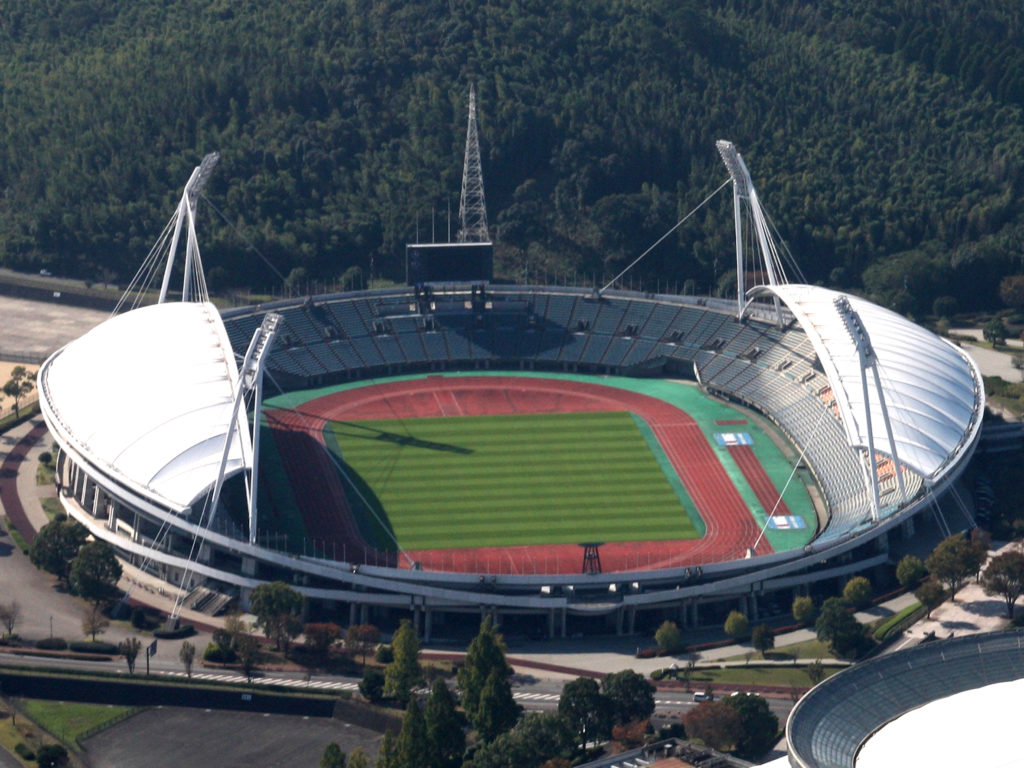
Name: Kumamoto Stadium
Location: Kumamoto Prefecture, Kumamoto City
Capacity: 32,000
Hosting: Two group matches
About:
Kumamoto Stadium – also named the Umakana Yokdna Stadium – is the furthest south of all Japan’s RWC venues. It is set among green forested hills, rolling parkland and rich agricultural land. Opened in March 2001, it was formerly Belgium’s training base during the 2002 Football World Cup. Now it is home to the Rosso Kumamoto soccer team and one of the premier venues for Top League rugby matches. It is situated in a large sports complex with several baseball diamonds, tennis courts, soccer fields and running tracks in the shadow of one of the world’s most active volcano – Mount Aso.
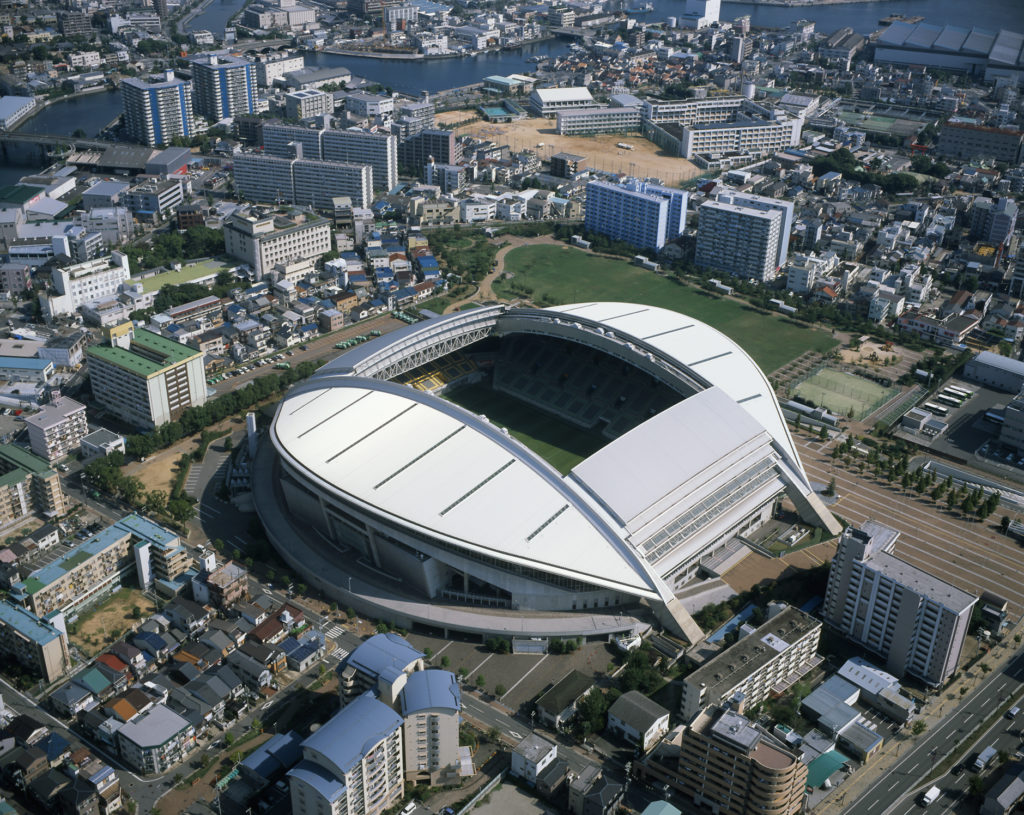
Name: Kobe Misaki Stadium
Location: Kobe City
Capacity: 30,132
Hosting: Four group matches
About:
Misaki Stadium straddles Osaka Bay in the quiet cosmopolitan port city of Kobe. It was completed in 2001 in preparation for the 2002 FIFA World Cup and features a fully retractable roof and a hybrid playing surface of artificial and natural turf. This purpose-built rectangular stadium is set within the larger Misaki Sports Park and home to the J. League Vissel Kobe soccer team and rugby union Top League’s Kobe Steel Kobelco Steelers.

Name: Fukuoka Hakatanomori Stadium
Location: Fukuoka Prefecture, Fukuoka City
Capacity: 20,049
Hosting: Three group matches
About:
The Fukuoka Hakatanomori Stadium is a compact and intimate venue purpose-built in 1995 for rectangular sporting events. The stadium is located in an 88-hectare sports park that houses several tennis courts, running tracks, archery facilities and baseball diamonds close to the city centre. The stadium is a veteran venue of rugby-related events having previously hosted the 2008 Pacific Nations Cup and the 2013 Asian Five Nations.
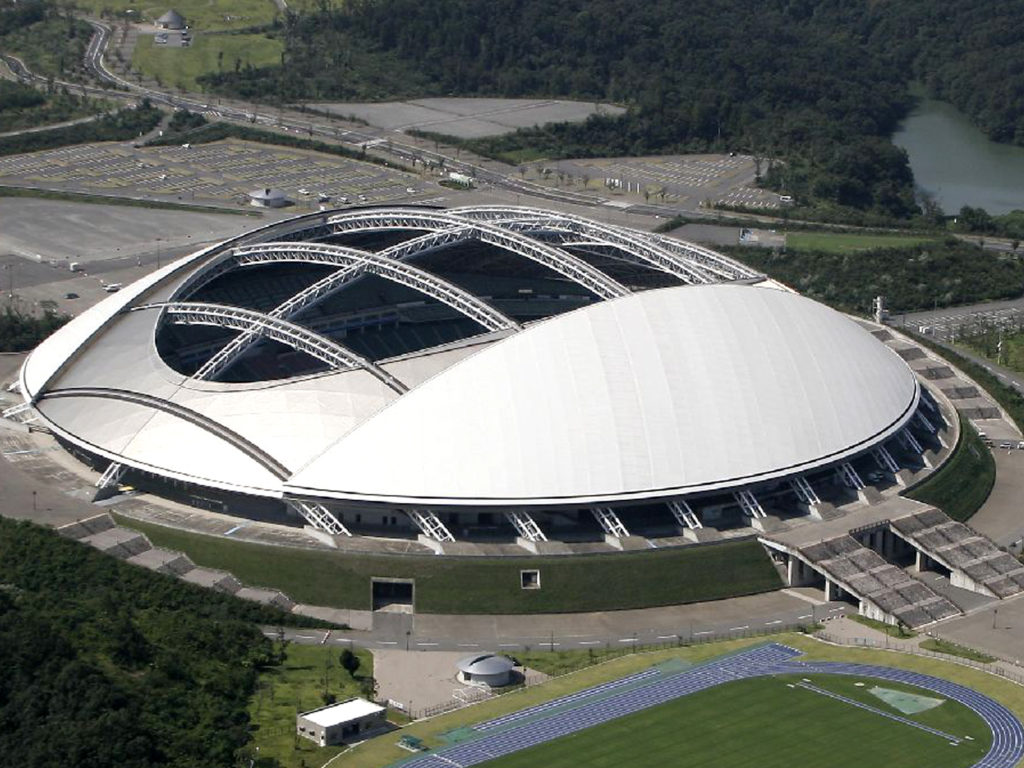
Name: Oita Stadium
Location: Oita Prefecture
Capacity: 40,000
Hosting: Three group matches and two quarter final
About:
Oita Stadium, affectionately known as the big eye, due to its retractable dome roof resembling the blinking of a human eye, was designed by leading Japanese architect Kisho Kurokawa. Oita Stadium opened in 2001 in time to host three games for the 2002 FIFA World Cup and is currently the home ground of the Oita Trinita soccer club. It is also one of three RWC host venues to be chosen on the southern island of Kyushu.


